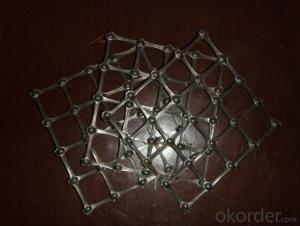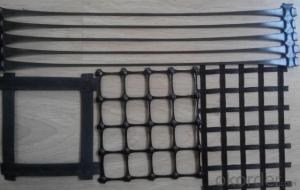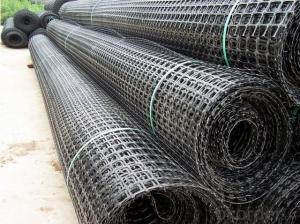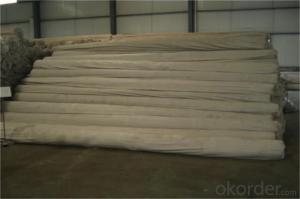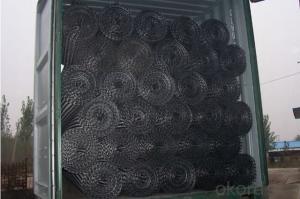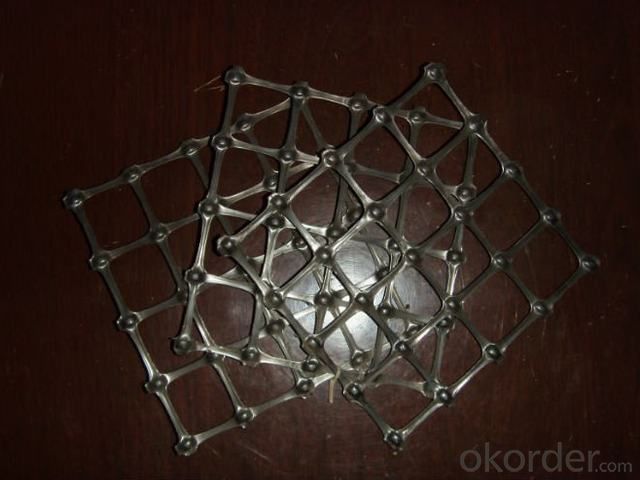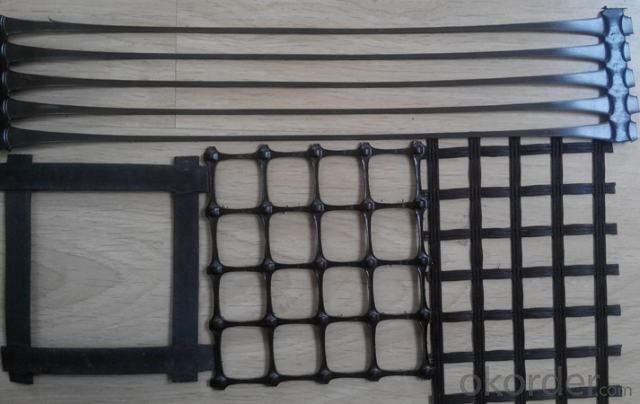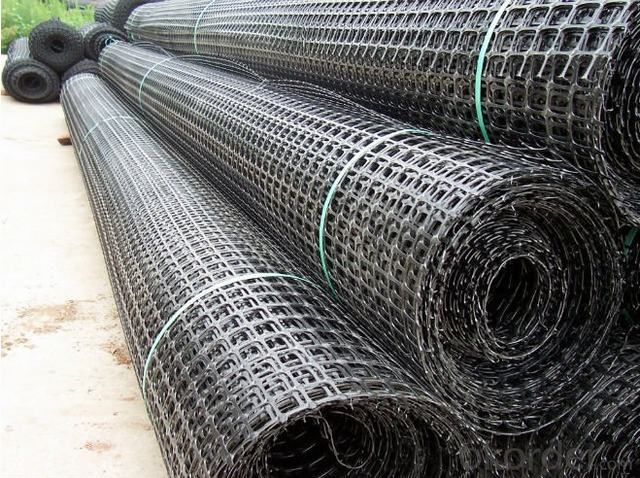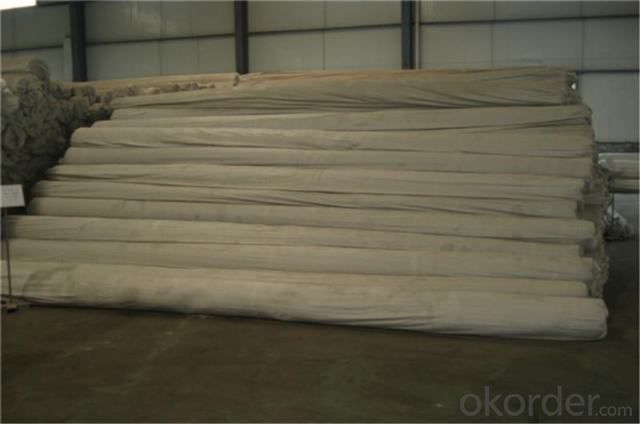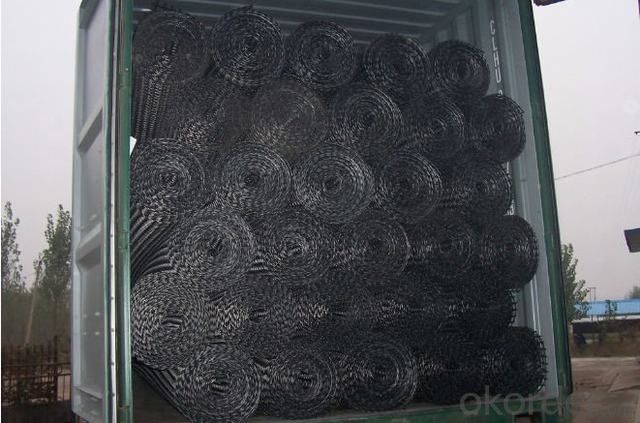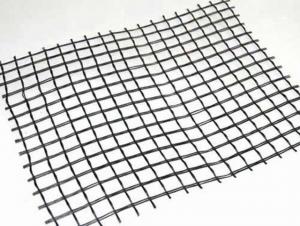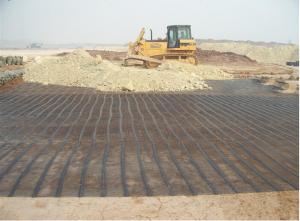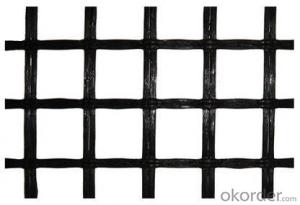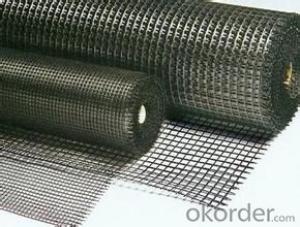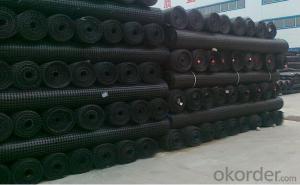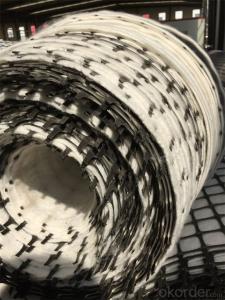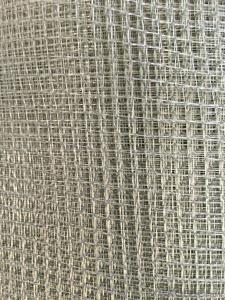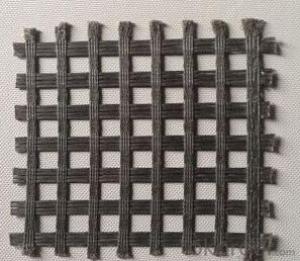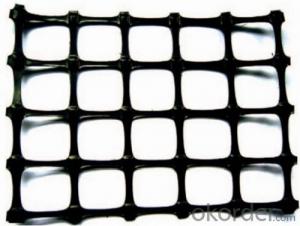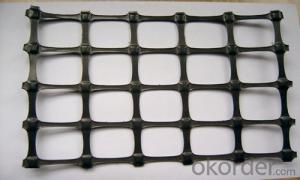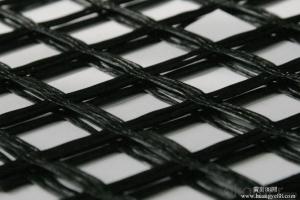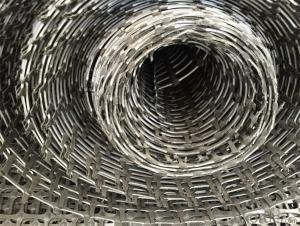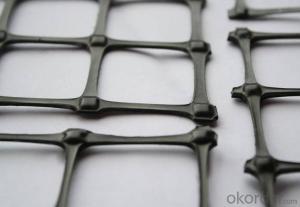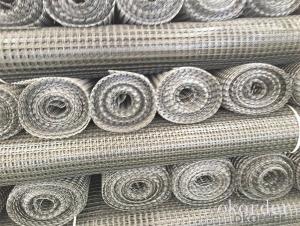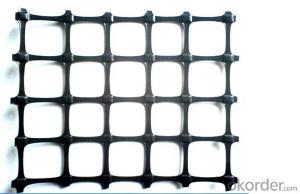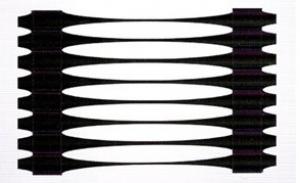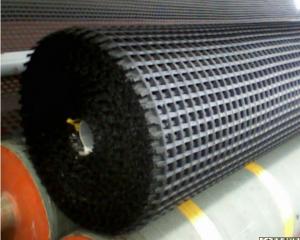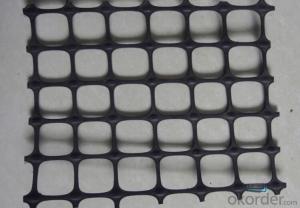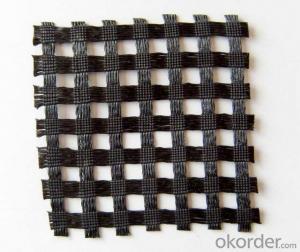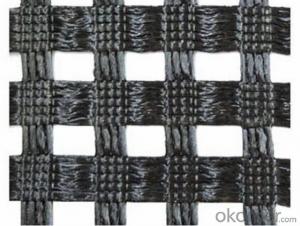Biaxial Polypropylene Geogrid Geocells for Road Construction in South Africa
- Loading Port:
- Qingdao
- Payment Terms:
- TT or L/C
- Min Order Qty:
- 20000 m²
- Supply Capability:
- 10000000 m²/month
OKorder Service Pledge
OKorder Financial Service
You Might Also Like
PP Uniaxial geogrid Product Profile
25-25KN,30-30KN,50-50KN,80-80KN,100-100KN,120-120KN,150-150KN,200-200KN
Width≤6m; Length 50m or as requested
PP Uniaxial geogrid Product Features
1. In high tensile strength
2. Low elongation
3. Anti-erosion, anti-aging
4. Light weight, structural uniformity, easy for construction
5. Flame retardant, anti-static, good overall performance, easy for mechanized operation
6. Good affinity with base materials
PP Uniaxial geogrid Product Specifications
Speification | Unit | 35 | 50 | 80 | 110 | 150 | 200 |
Width | m | 1 or 1.1 or 2.5 or 3 | |||||
Tensile strength | kN/m | 35 | 50 | 80 | 110 | 150 | 200 |
Elongation | % | 10 | 10 | 10 | 10 | 10 | 10 |
Tensile strength at 2% strain | kN/m | 10 | 12 | 26 | 32 | 42 | 56 |
Tensile strength at 5% strain | kN/m | 22 | 28 | 48 | 64 | 84 | 112 |
FAQ
1. What's the usage of geogrid?
It's used for reinforce the roadbeds in softe soil, railway and dam etc. It has good performance on preventing the cracks.
2. How about your quality of geogrid?
We have strict quality control system, we make testing on incoming raw material and finished products. Your third party testing is also welcomed. With high quality, our products are used on government projects at home and abroad. Our product quality is accepted by clients from all over the world.
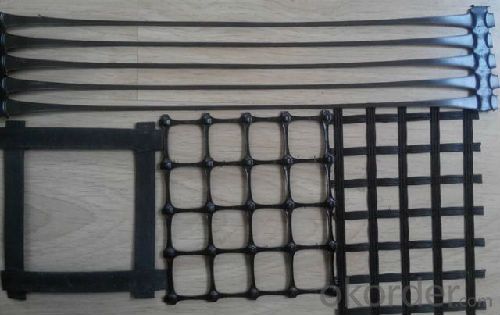
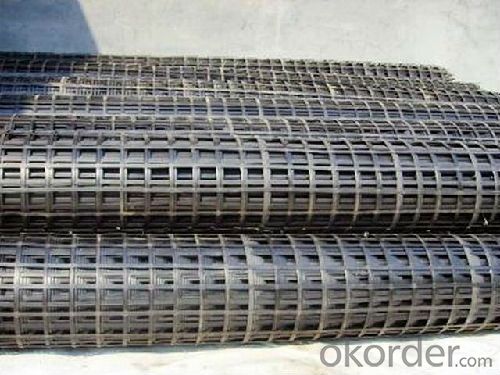
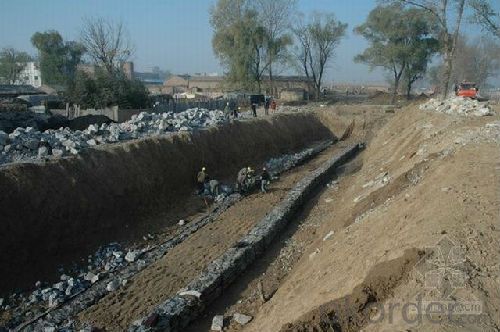
- Q: Can geogrids be used in shoreline protection?
- Yes, geogrids can be used in shoreline protection. Geogrids are commonly used in erosion control and shoreline stabilization projects. They provide reinforcement to the soil and help prevent erosion, especially in areas where waves and currents are strong. Geogrids can be installed along the shoreline to stabilize the soil, reduce erosion, and protect the coastline from further damage.
- Q: What are the differences between geogrids and geocells in terms of installation?
- Geogrids and geocells differ in terms of installation primarily because of their structural designs. Geogrids are typically rolled out and laid on a prepared surface, followed by anchoring them using stakes or pins. On the other hand, geocells are assembled on-site and filled with soil, aggregate, or other materials to create a stable structure. This process involves connecting individual cells and securing them together, forming a three-dimensional honeycomb-like structure. Therefore, while geogrids require relatively simpler installation techniques, geocells demand more labor and time for assembly.
- Q: How do geogrids help in reducing the risk of soil compaction?
- Geogrids help in reducing the risk of soil compaction by providing reinforcement and stability to the soil structure. They distribute the load evenly and prevent excessive pressure on the soil, thus reducing the chances of compaction. Additionally, geogrids improve the soil's strength and prevent it from settling, which further helps in minimizing the risk of compaction.
- Q: How do geogrids enhance the performance of geocells?
- Geogrids enhance the performance of geocells by providing additional stability and reinforcement. They are placed within the geocell structure to increase load-bearing capacity, prevent lateral spreading, and improve overall structural integrity. This combination of geogrids and geocells creates a stronger and more durable foundation for various applications such as soil stabilization, erosion control, and slope protection.
- Q: Can geogrids be used in temporary retaining structures?
- Yes, geogrids can be used in temporary retaining structures. Geogrids are commonly used to reinforce soil and provide stability in retaining walls and structures. They are versatile and can be used in both permanent and temporary applications, making them suitable for various construction and engineering projects.
- Q: Are geogrids suitable for use in ground reinforcement for wind farms?
- Yes, geogrids are suitable for use in ground reinforcement for wind farms. Geogrids provide excellent load-bearing capacity, soil stabilization, and erosion control, making them ideal for reinforcing the ground in areas with high wind speeds. They distribute loads effectively, reduce soil movement, and enhance the overall stability of the ground, ensuring the proper functioning and longevity of wind farm infrastructure.
- Q: Are geogrids resistant to aging?
- Yes, geogrids are generally resistant to aging. They are designed to withstand long-term exposure to environmental factors such as UV radiation, chemicals, and temperature variations, ensuring their durability and longevity.
- Q: How do geogrids prevent lateral spreading of soil?
- Geogrids prevent lateral spreading of soil by providing reinforcement and increased stability to the soil structure. When placed within the soil, geogrids distribute the tensile forces and restrict the movement of soil particles, reducing the potential for lateral movement. The interlocking of the geogrids with the soil creates a stronger composite material, preventing the soil from spreading laterally and maintaining its integrity.
- Q: What are the durability characteristics of geogrids?
- Geogrids have excellent durability characteristics due to their high tensile strength and resistance to environmental factors such as UV radiation, chemical exposure, and temperature variations. They are designed to withstand heavy loads and prolonged use without significant deformation or degradation, offering long-term stability and performance in various soil reinforcement applications.
- Q: How do geogrids improve the performance of unpaved roads?
- Geogrids improve the performance of unpaved roads by enhancing the stability and strength of the road base. They help distribute the load and prevent the lateral movement of soil particles, thereby reducing rutting and potholes. Geogrids also enhance the overall longevity of the road by reducing the need for maintenance and repair, making the road more durable and cost-effective in the long run.
1. Manufacturer Overview
| Location | Shandong, China |
| Year Established | 2002 |
| Annual Output Value | Above US$ 20 Million |
| Main Markets | 20.00% North America 15.00% South America 15.00% Eastern Europe 10.00% Southeast Asia 10.00% Northern Europe 10.00% South Asia 10.00% Western Europe 5.00% Africa 5.00% Mid East |
| Company Certifications | ISO9001:2000; |
2. Manufacturer Certificates
| a) Certification Name | |
| Range | |
| Reference | |
| Validity Period |
3. Manufacturer Capability
| a) Trade Capacity | |
| Nearest Port | Qingdao Port |
| Export Percentage | 41% - 50% |
| No.of Employees in Trade Department | 6-10 People |
| Language Spoken: | English; Chinese; |
| b) Factory Information | |
| Factory Size: | Above 80,000 square meters |
| No. of Production Lines | Above 10 |
| Contract Manufacturing | Design Service Offered; Buyer Label Offered |
| Product Price Range | High; Average |
Send your message to us
Biaxial Polypropylene Geogrid Geocells for Road Construction in South Africa
- Loading Port:
- Qingdao
- Payment Terms:
- TT or L/C
- Min Order Qty:
- 20000 m²
- Supply Capability:
- 10000000 m²/month
OKorder Service Pledge
OKorder Financial Service
Similar products
Hot products
Hot Searches
Related keywords
